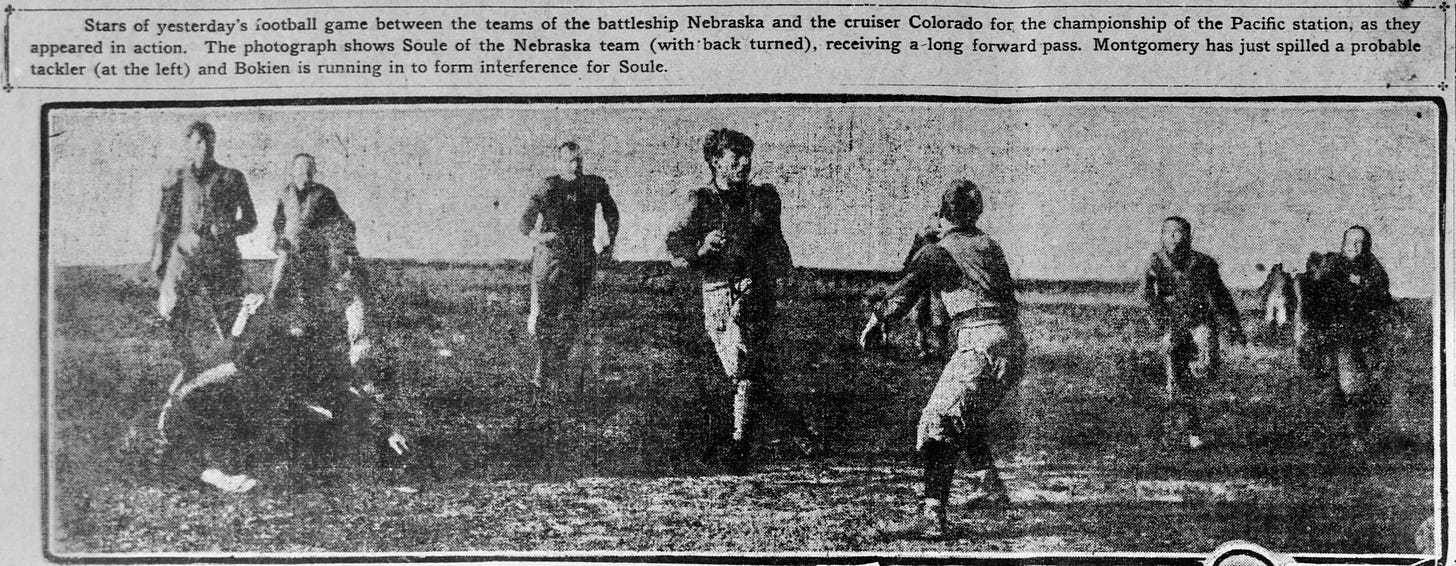Today's Tidbit... Before There Was Pass Interference
It isn't easy to get things right on the first go-around, as shown when the forward pass became legal in 1906. The rules heavily restricted the forward pass, and the game lacked proven throwing, catching, and route-running techniques we now consider obvious. Also missing were rules concerning pass interference.
Pass interference went unmentioned in the 1906 rule book for three reasons. First, many anticipated the forward pass to look like what we consider the forward lateral, so perhaps they thought it was unnecessary. Second, with so many new rules passed that year, they likely lacked the time to address pass interference.
Third, those who anticipated a downfield passing game viewed it as similar to the punting game in which the players running downfield to cover the punt engaged in pushing and shoving battles with return team members.
Without limits on who could shove who on forward passes and no restrictions on ineligible receivers being downfield, teams designed plays in which offensive linemen ran downfield to screen, sometimes surrounding, an eligible receiver to whom a teammate tossed the ball. Still, the forward pass saw limited use in 1906 and 1907, but enough that the rule makers recognized the need to rein in pass interference, but not too much.

As shown by the selection below from the 1909 rule book, "…players of the defensive side may not use their hands or arms on an opponent except to push him out of the way to get at the ball themselves." Likewise, eligible receivers on offense could use their hands or arms, as they did when covering kicks.
The open shoving of opponents in the passing game continued for another two years until a host of rule changes occurred in 1910. Among them were steps to further liberalize the passing game, including limits on downfield contact that approached the rules in place today. The 1910 rule book stated:
No player of either side can be tackled, thrown, pushed, pulled, shouldered or straight-armed until he shall have caught the ball and taken more than one step in any direction, provided that any such interference which is incidental to a bona fide attempt to catch or intercept the pass shall not come within this prohibition.
1910 Official Foot Ball Guide
The portion of the rule prohibiting the tackling of a receiver until he took one step foreshadowed today's rule prohibiting hits on defenseless receivers. That part of the rule went away in 1911 when they simplified it so neither side could interfere with an opponent after the ball crossed the line of scrimmage until the ball was touched or "in an actual attempt to catch a forward pass."
Additional language came along when press coverage entered the game, and more hand fighting is allowed now than in the past, but the spirit of pass interference rules has been unchanged since 1911.
Football Archaeology is reader-supported. Click here to buy one of my books or otherwise support the site.


